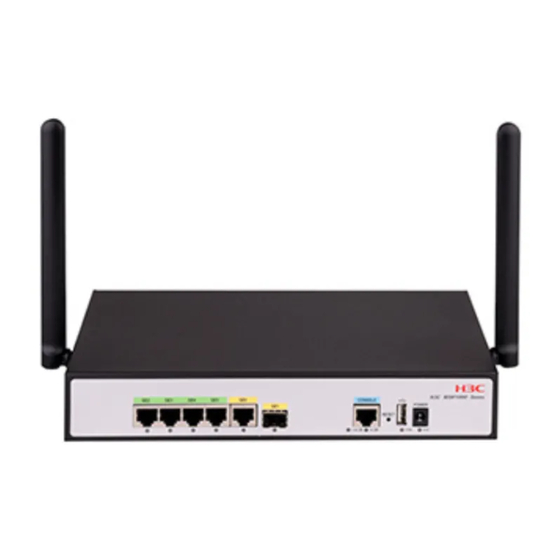
Table of Contents
Advertisement
Quick Links
Contents
1 Preparing for installation ·········································································· 1-1
Safety recommendations ································································································································ 1-1
Safety symbols ········································································································································ 1-1
General safety recommendations ··········································································································· 1-1
Electricity safety ······································································································································ 1-1
Examining the installation site ························································································································· 1-2
Temperature and humidity ······················································································································ 1-2
Cleanliness ·············································································································································· 1-2
Cooling ···················································································································································· 1-3
ESD prevention ······································································································································· 1-3
EMI ·························································································································································· 1-4
Lightning protection ································································································································· 1-4
Installation tools and accessories ··················································································································· 1-4
Installation tools ······································································································································ 1-4
Installation accessories ··························································································································· 1-6
Pre-installation checklist·································································································································· 1-8
2 Installing the router ·················································································· 2-1
Installation prerequisites ································································································································· 2-1
Installation flowchart········································································································································ 2-1
Installing the router·········································································································································· 2-2
Mounting the router in a 19-inch rack ······································································································ 2-2
Mounting the router on a workbench ······································································································· 2-4
Mounting the router on a DIN rail ············································································································ 2-4
Mounting the router on a wall ·················································································································· 2-5
Grounding the router ······································································································································· 2-8
Installing a micro SIM card ······························································································································ 2-9
Restrictions and guidelines ····················································································································· 2-9
Procedure ················································································································································ 2-9
Installing a 4G/5G stick antenna ··················································································································· 2-10
Installing a 4G/5G antenna extension cable (with a magnetic antenna mount base) ··································· 2-11
Connecting the power adapter or power cord ······························································································· 2-12
Connecting the power adapter ·············································································································· 2-13
Connecting the power cord ··················································································································· 2-13
Connecting Ethernet interface cables ··········································································································· 2-14
Connecting the console cable and setting terminal parameters ··································································· 2-14
Console cables ······································································································································ 2-14
Connecting a DB9-to-RJ45 console cable ···························································································· 2-15
Connecting a USB-to-RJ45 console cable ···························································································· 2-16
Setting configuration terminal parameters ···························································································· 2-17
Verifying the installation ································································································································ 2-17
Accessing the router for the first time············································································································ 2-18
3 Troubleshooting ······················································································· 3-1
Power supply failure ········································································································································ 3-1
No display on the configuration terminal ········································································································· 3-1
Garbled display on the configuration terminal ································································································· 3-2
No response from the serial port ····················································································································· 3-2
Micro SIM card and antenna failures ·············································································································· 3-2
Restoring the factory settings ························································································································· 3-3
Scenario 1 ··············································································································································· 3-3
Scenario 2 ··············································································································································· 3-3
Scenario 3 ··············································································································································· 3-3
Reset button usage guidelines ················································································································ 3-3
i
Advertisement
Table of Contents













Need help?
Do you have a question about the MSR1000 Series and is the answer not in the manual?
Questions and answers